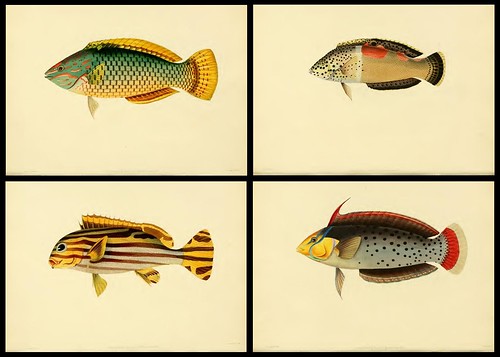

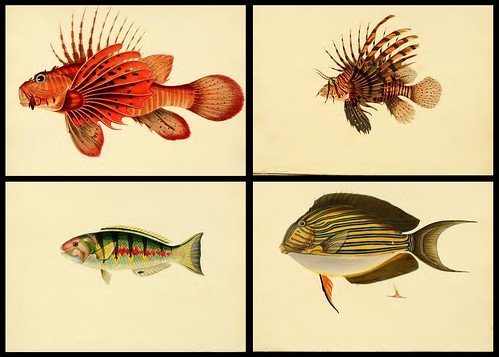
These stunning hand-coloured engravings of exotic fish from Sri Lanka (extracted from a .pdf) are from:
'A Selection from the most Remarkable and Interesting of the Fishes Found on the Coast of Ceylon from Drawings made in the Southern Part of that Island from the Living Specimens by John Whitchurch Bennett, 2nd Ed. 1834'.
The work contains thirty illustrations in total and the Harvard University edition is available at the Internet Archive. (See related: html version of Tennant's 'Natural History of Ceylon' from 1861 - alas, the images are photocopy quality)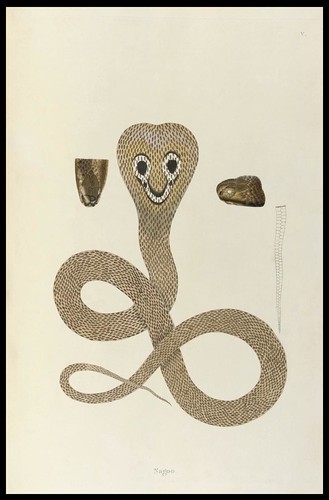
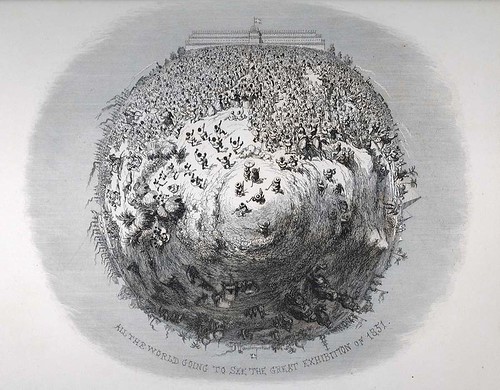
'All the World Going to See the Great Exhibition of 1851' by George Cruikshank.
[image and quote from this entry - where there is more info. - at one of my favourite sites: Princeton Graphic Arts Blog.]
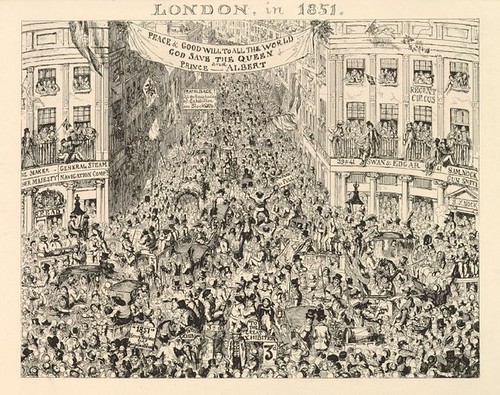


'An Overland Journey to the Great Exhibition. Showing a Few Extra Articles & Visitors' by (at one time) Punch Magazine illustrator, Richard Doyle. The book contains no text and the satirical parade of humans and animals on their way to Crystal Palace measured nine feet in length when all of the illustrations were joined together. The composite image is from PBA Galleries and the second illustration comes from the Great Exhibition Humorous Asides page at Kansas University's Spencer Library.

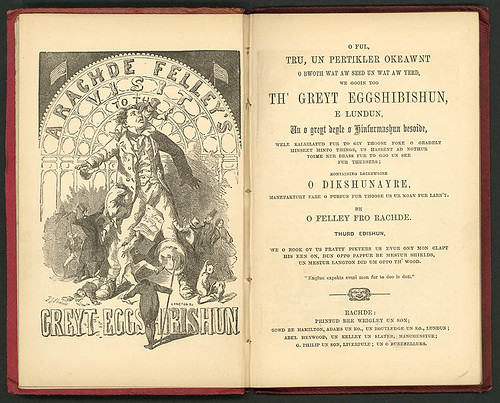
'O Ful, Tru, un Pertikler Okeaawnt o bwoth wat aw seed un wat aw yerd, we gooin too Th' Greyt Eggshibishun, e Lundun, an a greyt deyle of Hinfurmashun besoide' by Oliver Ormerod (penned under his Rochdale, Lancashire pseudonym, Felley from Rachde).
"The title of the book (translated from the Rochdalian) is "A full, true and particular account of both what I saw and what I heard when going to the Great Exhibition, in London, and a great deal of information besides." (image and quote also from Kansas U.)

The prompt that made me look around for some satirical prints on the Great Exhibition of 1851 was receiving a (requested) copy of the catalogue (available online) from Melbourne's Monash University Library exhibition (until August 31) - Fifty Books for Fifty Years. "This is an exhibition of fifty books chosen by Monash academics and researchers.[..] The fifty participants have chosen items they have consulted in the course of their work. The result is a fascinating variety of books, many of which have never been displayed." If not for the thousand-or-so kilometres, I would definitely go.
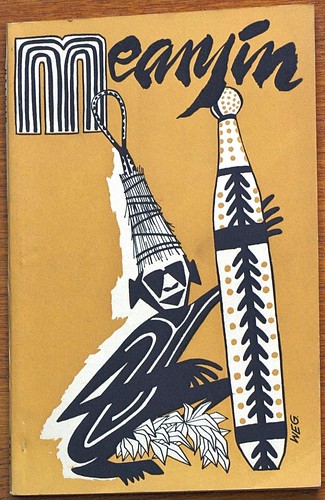
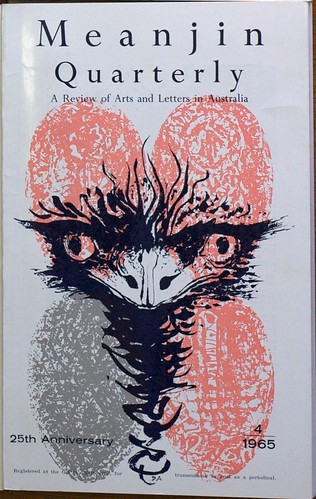
Speaking of Melbourne, Sophie Cunningham is a publisher, journalist, writer and current editor of Meanjin, an Australian literary and culture magazine established more than sixty years ago. Sophie has posted a set of photographs of Meanjin covers to Flickr. Both the stylised Aboriginal figure in ceremonial* attire and emu head cover illustrations above remain under copyright and have been posted here with permission.
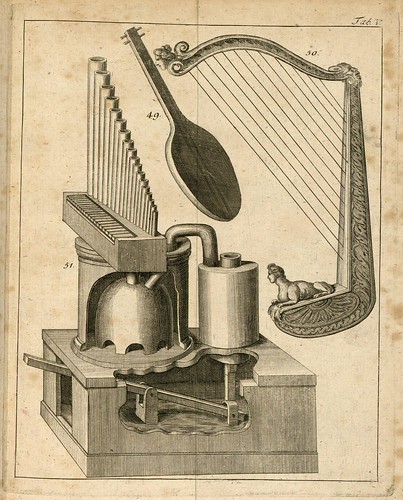
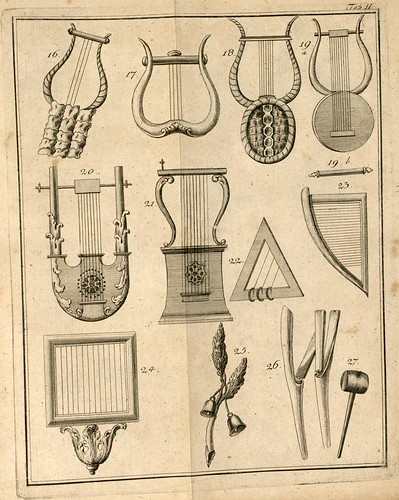
These engravings come from the first of Johann Forkel's ambitious 2-volume work, 'Allgemeine Geschichte der Musik' (General History of Music) [1788-1801]. These, together with a couple more similarly interesting illustrations can be found on the last pages of Tome I at the Universities of Strasbourg Digital Library (very little of visual interest in Tome 2). I presume the schematic in the first illustration above is a pedal control unit for a pneumatic organ. It's too early for steam. Forkel was a biographer of Bach and is often regarded as the founder of modern musicology. He was never able to complete the planned third volume in the series so this first German attempt at documenting the history of music stops at the beginning of the 16th century. (See: i, ii, iii)
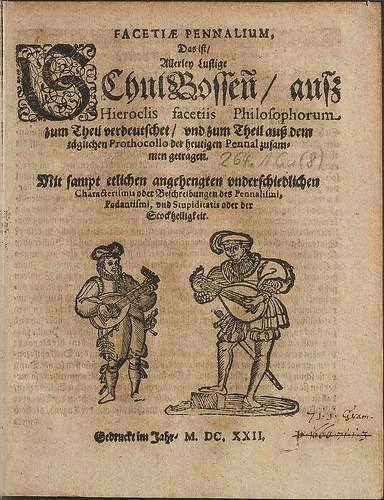
Titlepage from 'Facetiae Pennalium', 1622, by Julius Zincgref from HAB. I know nothing about this book although I suspect it is philosophical in nature. Somewhere around I have a couple of links to emblemata books by him which might materialise here in the future.
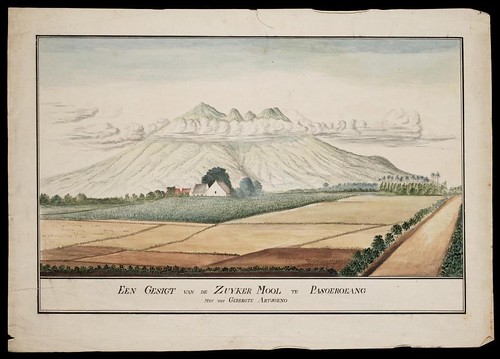

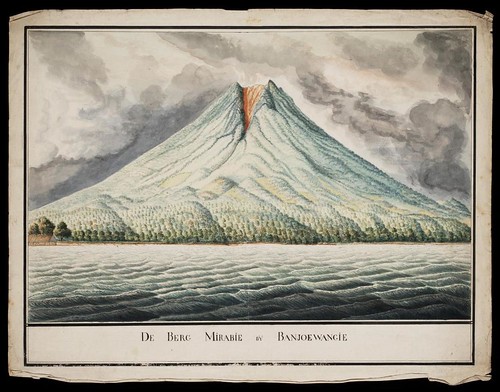
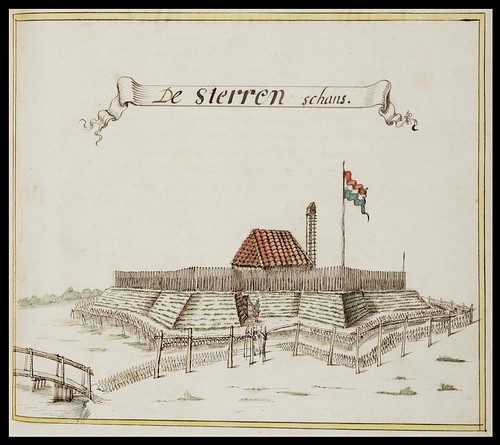
Despite the terrible rendering of online translation of Dutch, I'm fairly confident all four images above relate to the Java region of Indonesia and
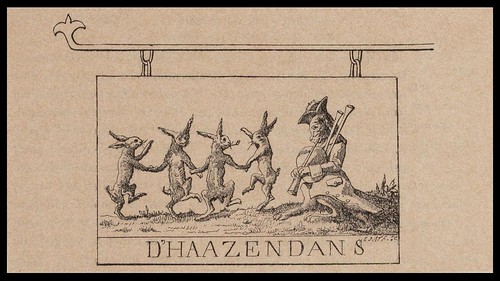
Spliced from screencaps [Dutch National Archives Image Bank]
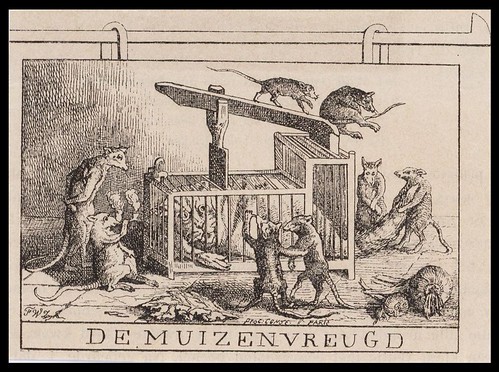
The Joy of Mice spliced from screencaps [Dutch National Archive Image Bank]

Now, as I'm posting this entry, I've found a decent write up at the Henry Davis site. They advise that the map - the German equivalent of the 'Hereford Mappamundi' - is known as the 'Ebstorf Mappamundi' (image) and was produced in 1234 by Gervase of Tilbury.

[I think: Village Fair or Not?]
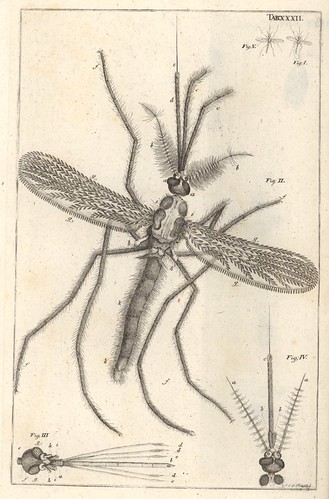
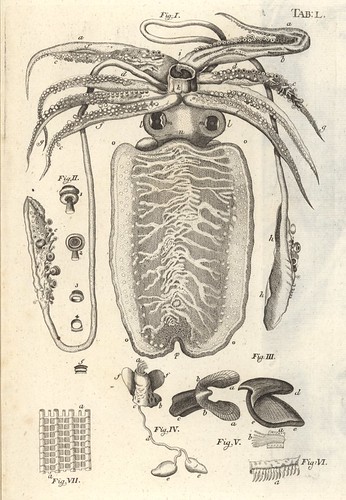
These fabulous squid and mosquito engravings come from Jan Swammerdam's classic 'Bibel der Natur' (1752). The whole book is (finally!) online at Berlin's Humboldt University E-Doc server. (note the thumbnail link top left; the text may be photocopy quality but the engravings are great: 'Höhere Auflösung'=high resolution)
The Dutch microscopist, Jan Swammerdam, conducted groundbreaking research into the development of insects and made significant contributions to human anatomy and scientific methodology. (see: i, ii, iii)

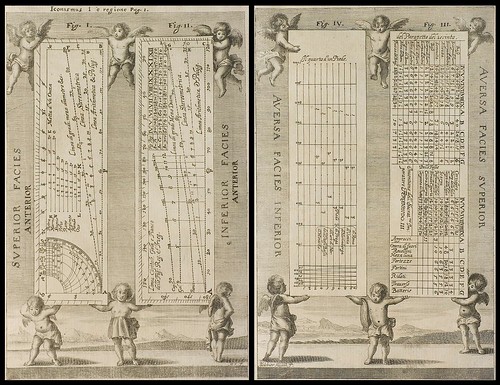
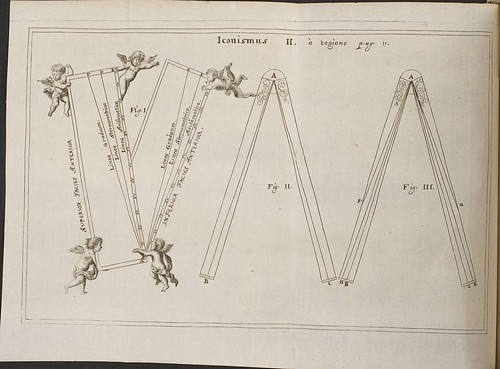
I jagged these odd engravings from 'Mathesis Caesarea' (1662) just because the idea of adding putti (cupids) to an otherwise rather dry reworking of Albert von Curtz's 'Amussis Fernandea' by Gaspar Schott (the book being about mathematics, geometry and military architecture) seems amusingly incongruous. The book is online at HAB. [Schott was assistant to Athanasius Kircher] See: Polybiblio.
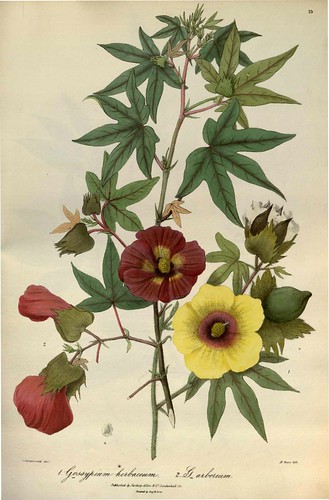
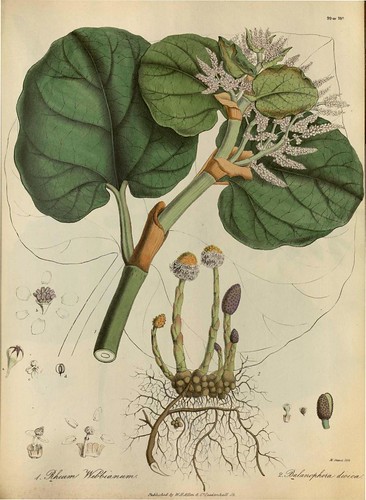
These plates (extracted from a .pdf) come from the beautiful book, 'Illustrations of the Botany and other Branches of the Natural History of the Himalayan Mountains and of the Flora of Cashmere' by J. Forbes Royle, 1839. The book was digitised by Missouri Botanical Gardens and is available through the Biodiversity Heritage Library.
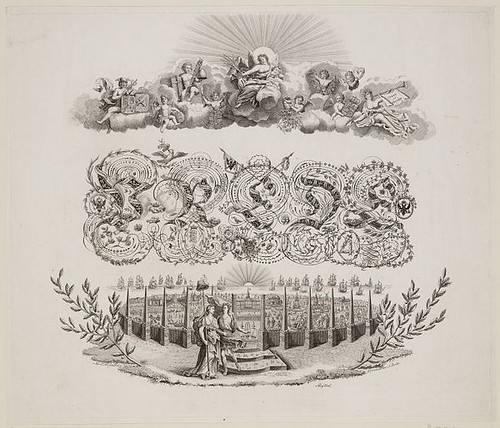
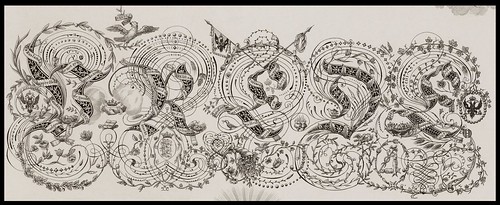
'Allegorie op de Vrede' (Allegory of Peace) is by A. Zürcher 1814 (not sure if there's any relationship to the engraver of the rabbits and mice satires up above). The main image is fairly small but I managed to cobble together a fair sized detail of the spectacular ornamental typography from screen caps. This image comes from the Amsterdam Archive Image Bank and is definitely worth seeing in high resolution snippets within the constraints of the flash magnification box at the site.
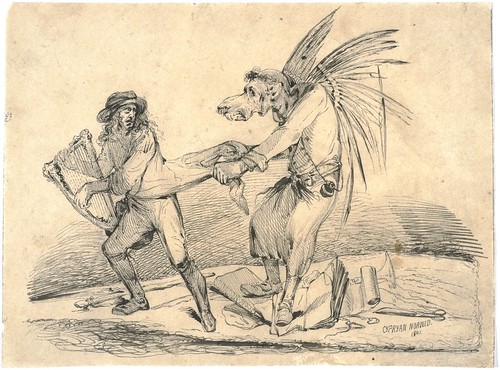
'Zoilus' by Cyprian Norwid (search on his name at the Polish Digital Library - they have a large number of his works. As previously noted, Matt from Rashomon made a beautiful five minute collage-film from a range of Norwid prints)
Many, but not all, of the above images have been spot or background cleaned as the mood took me. As usual, click through the images to flickr and then click 'All Sizes' for larger format versions.
The title of this entry - Multiplicity in Time and Space - was a phrase I first heard used years ago by a physician describing the unique profile of symptoms associated with Multiple Sclerosis (the syndrome erratically affects various parts of the body for varying amounts of time).
There is no intended reference here to MS at all, but I've always thought it was an elegant turn of phrase and adequately describes the eclectic array of images above: produced by many people at different times in history and obtained from a range of sources. It was also the first thing that came into my head today when I was trying to summons forth a title.
More links? Try the bookmarks.



















13 comments :
Vous nous avez vraiment gâtè aujourd'hui ! Thank you .
yes, "kermis of geen kermis" means "village fair or not". It literally means "village fair or no village fair", and the rhyme below the picture means "here entertainment is beckoning/ over there the grave will await you/kindly abstain from the joy of the fair".
great finds, as usual.
The engravings of the fish are spectacular. Thank you!
The maps and drawings in the imagebank of the Dutch National Archives are from the period that the Dutch East India Company was active, roughly between 1600 and 1815. The first three images shown above, from the collection Engelhardt, date from the end of the 18th century. The fourth image is mid 17th century.
The images in our imagebank under 'VOC kaarten' have been digitized for the ongoing series 'Comprehensive Atlas of the Dutch United East India Company'; seven atlasses in all of which the first two have been published at this moment. Parts 3 and 4 will follow this fall. For more information on the atlasses see the website of the publisher.
Yours,
Gijs Boink
Senior Reference Archivist
Dutch national Archives
I just want to say thank you and keep up the fantastic, thought provoking, and inspiring content! Bravo!
Gracias!
Thanks very much for the background information Gijs: I've adjusted the commentary above. It's certainly a great collection and I'll be sure to keep an eye out for the further material.
The image of the Indian serpent comes from lot 48 in the Christie's sale of The Foljambe Collection Removed from Osberton Hall that was sold on Wednesday 30 April 2008. You can see the description here:
http://tinyurl.com/5nhf7l
The following lot in the same sale was Russell's Descriptions and Figures of Two Hundred Fishes; collected at Vizagapatam on the coast of the Coromandel, published in London in 1803. Here's the link:
http://tinyurl.com/5o7nhc
This latter book contains 171 fantastic mezzotint plates.
Keep up the good work, Peacay!
thank you for your blog! it's really interesting, and an infinite source of inspiration.
can I suggest you the following link with many beautiful artist's books images? http://photoservice.electaweb.it/news/articolo/il-libro-dartista/it/
It would be great if you can publish some of them, and link back to us.
keep on with the good work.
ale.
Thanks for the blog
Please see..
http://bibliotecadigitalhispanica.bne.es/exlibris/dtl/u3_1/dtle/www_r_spa/icon/ico_complex.gif
Not sure what you're trying to link to there Mario but those collections at la Biblioteca Digital Hispánica are great.
I've always detested putti, but must agree that they add that special je ne sais quoi to math texts. (Otherwise, of course, the rest of the images are much more interesting and delightful.)
peacay, thanks for being so perspicacious. It's 2008. I'm correting.
Post a Comment
Comments are all moderated so don't waste your time spamming: they will never show up.
If you include ANY links that aren't pertinent to the blog post or discussion they will be deleted and a rash will break out in your underwear.
Also: please play the ball and not the person.
Note: only a member of this blog may post a comment.